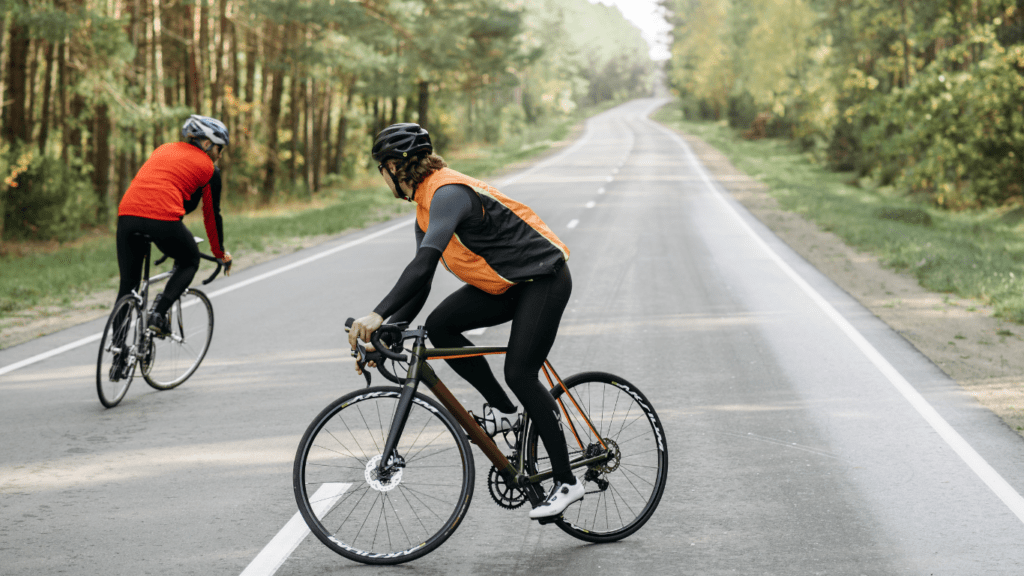Understanding Cycling Safety
Cycling safety is crucial, especially for beginners who are not yet familiar with the potential risks and necessary precautions.
The Importance of Safety for Beginner Cyclists
Safety for beginner cyclists ensures a positive, injury-free experience. Prioritizing safety helps new cyclists develop confidence and maintain physical health.
Novice riders benefit from understanding traffic rules, using protective gear, and recognizing safe routes to prevent accidents.
Common Risks Associated with Cycling
Cyclists face various risks, including:
- traffic accidents
- poor road conditions
- mechanical failures.
Urban areas present higher risks due to dense traffic and limited cycling infrastructure.
Rural roads pose dangers like uneven surfaces and unexpected obstacles. Using high-quality equipment, performing regular bike checks, and staying vigilant can mitigate these risks.
Essential Safety Gear
Choosing the right safety gear significantly reduces the risk of injury for beginner cyclists. Let’s explore key items that every new cyclist needs.
Helmet Selection and Fit
A well-fitted helmet is crucial for protecting your head during falls or accidents. Measure the circumference of your head to select the appropriate helmet size.
Adjust the straps so the helmet fits snugly, sitting level on your head with no movement. Look for helmets that meet safety standards set by authorities like the Consumer Product Safety Commission (CPSC).
Importance of Visibility: Lights and Reflective Clothing
High visibility minimizes the risk of collisions, especially during low-light conditions. Use front and rear lights rated at least 100 lumens. Reflective clothing, including vests and ankle bands, enhances your visibility to drivers.
Opt for bright colors during daytime cycling to stand out on the road.
Rules of the Road

Following the rules of the road creates a safer environment for cyclists and everyone else sharing the space. It’s important for beginner cyclists to understand these rules thoroughly.
Navigating Traffic as a Cyclist
Cyclists must ride in the same direction as traffic. This helps drivers anticipate your movements, which enhances overall safety.
Use bike lanes when available, but if there are none, stay to the right side of the lane without riding on sidewalks.
Avoid sudden movements, and maintain a predictable path to help drivers and pedestrians understand your intentions. Always stop at red lights and stop signs.
Right-of-Way and Signaling
Yield to pedestrians at crosswalks and intersections. Share the road with vehicles and practice defensive riding. Use hand signals to communicate your actions to drivers.
Point left with your left arm extended straight to indicate a left turn. Point right either with your right arm extended straight or your left arm bent upwards at a 90-degree angle.
Use a downwards bent left arm to signal a stop. These signals notify others of your intentions, reducing the risk of collisions.
Planning Your Ride
Careful planning ensures a safe and enjoyable cycling experience. Consider these key factors before heading out.
Choosing the Right Routes
Privacy and safety are paramount when selecting cycling routes. Opt for bike lanes or designated cycling paths to avoid heavy traffic. Use apps like Strava or Google Maps to find popular routes frequented by other cyclists.
While planning, check for potential hazards such as construction zones or uneven terrain that can compromise safety.
Weather Considerations and Timing
Check weather forecasts before cycling to anticipate conditions. Avoid cycling during extreme weather, including heavy rain, snow, or strong winds, which increase risks.
Schedule rides during daylight hours. If riding in low-light conditions, use appropriate lighting and reflective gear for visibility.
Maintaining Your Bike
Regular bike maintenance plays a crucial role in ensuring a safe and smooth ride. Consistent checks and timely repairs can prevent accidents and prolong the bike’s lifespan.
Regular Inspection and Maintenance Tips
- Regularly inspecting your bike helps catch potential issues before they become serious problems.
- Ensure that my brake pads and cables are in good condition, replacing them if they show signs of wear.
- Tire pressure should match the manufacturer’s recommendations since under or over-inflated tires can lead to accidents.
- Chains and gears should remain clean and properly lubricated to avoid malfunction. I clean my chain every 100-150 miles.
- Tighten bolts and screws to maintain bike integrity and prevent parts from loosening while riding.
- Keeping a maintenance log can help track when each part was last checked or replaced, ensuring nothing is overlooked.
Handling Emergency Repairs
Unexpected issues can arise on any ride. Carrying a basic repair kit is essential for handling emergencies. My kit includes a spare tube, tire levers, a multi-tool, and a mini pump.
Knowing how to fix a flat tire is crucial. Practicing at home boosts confidence and efficiency during real situations.
Broken chains or derailleurs can sideline a ride. A quick link and chain breaker in your kit allow for chain repairs.
Additionally, knowing how to adjust brake tension and gear settings on the go ensures you can fix minor problems without cutting the ride short.

 Hello, I'm Henry Kirkland, and I’m proud to be part of the Cycle Smooth Ride Long team. Cycling is more than just a sport for me—it’s a way of life. I’m here to share my passion and expertise with you, helping you navigate the world of cycling with confidence and joy.
Whether you’re a beginner looking to get started or a seasoned rider aiming to refine your skills, my goal is to provide you with the insights, tips, and guidance you need to make the most of your cycling journey. At Cycle Smooth Ride Long, we’re dedicated to creating a community where cyclists of all levels can connect, learn, and grow together.
Hello, I'm Henry Kirkland, and I’m proud to be part of the Cycle Smooth Ride Long team. Cycling is more than just a sport for me—it’s a way of life. I’m here to share my passion and expertise with you, helping you navigate the world of cycling with confidence and joy.
Whether you’re a beginner looking to get started or a seasoned rider aiming to refine your skills, my goal is to provide you with the insights, tips, and guidance you need to make the most of your cycling journey. At Cycle Smooth Ride Long, we’re dedicated to creating a community where cyclists of all levels can connect, learn, and grow together.
